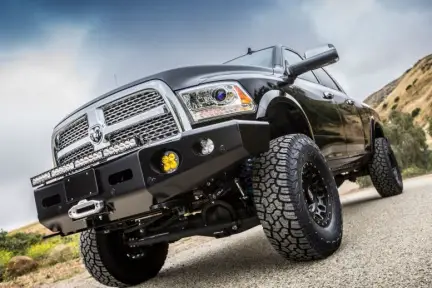
If you own an SUV or pickup truck, understanding the difference between passenger vs Light Truck tires is very important. When considering a tire replacement, you have many options, so sufficient knowledge can help you make good decisions.
Talking about which one you should choose? It all comes down to your need and driving requirements. Because each tire has different construction and pros and cons, only you can tell which one will be the right for you.
If you want to check whether a tire is a passenger P-metric or a Light truck tire, see its size number. If it begins with a P symbol or without any character, then the tire is P-metric. However, if there is an LT symbol at the start of the size number, it will be a light truck tire.
P-Metric Tires for a Smoother Ride and Extra Mileage
P in the P-metric shows that it's for a passenger automobile. Generally, the passenger vehicles are cars (like sedans), CUVs, and minivans, but it can be a light truck that does not tow heavy loads or avoids running on a gritty road. The tires that do not have any character are also passenger tires. Their unique internal construction makes them more durable, makes the rides smoother, enhances the handling ability, and improves mileage.
Many trucks (half-ton) come with passenger tires from the factory. The reason behind it is simply because many drivers do not drive on rough roads and do not necessarily carry extra heavy loads on their trucks. This tells us that if you are looking for a tire replacement and do not go off-road often and only carry light loads on your vehicle, then a passenger tire will be a better choice.
With this, you can have a tire that will fulfill all your needs and will run for a very long time without wearing it down. P-metric tires mostly have a 60,000 miles tread warranty that shows their durability.
Note that if your truck was equipped with an LT from the factory, you should use an LT-rated tire as a replacement. Replacing P-Metric with LT is suitable but from LT to P-metric is not acceptable.
LT Tires for Towing Heavy Loads and Off-Road Durability
One fact is that LT tires are expensive when compared to P-metric tires. Because LT tires are more heavy-duty and are built to bear the wear and tear due to running on rough terrains (off-road). The LT tires often have extra rubber layers, steel belts, deeper tread, and a more muscular shoulder to support the extreme requirements compared to p-metric tires.
LT tires range from 8-ply to 10-ply depending on the load rating, whereas p-metric range from 4-6 ply. Even though the tires are more robust, there are some cons, like not so comfortable smooth ride, less fuel efficiency, and lower mileage.
So if you have to tow heavier loads and often drive off-road, then LT tire will be a more optimal choice.
Same articles

Understanding Vehicle Inspection and Verification Services: Why They Matter for Every Driver
GuidesVehicle inspection and verification services are an essential but often overlooked part of keeping roads safe and cars legally compliant. Most people only think about inspections when it’s...
KLIFEX Brand Overview: High-Quality Automotive Repair Kits for Affordable Repairs
GuidesThe automotive aftermarket has long needed solutions that combine reliability, durability, and affordability. Many car enthusiasts and services are looking for a way...
Fast, Reliable Vehicle Emissions & Inspection Services Made Simple
GuidesFast, reliable emissions and inspection services are essential for keeping vehicles road-ready, compliant with environmental regulations, and safe for daily driving. If you’re looking for quick...

